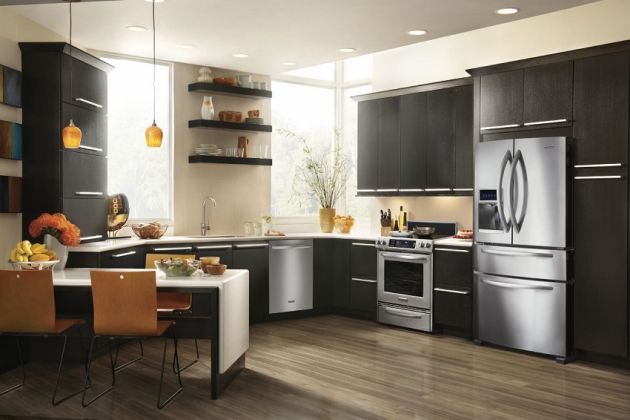When it comes to kitchen remodeling, there are many terms that are new and hard to understand for most people. At first glance, many terms may seem to be interchangeable, but in reality, they are not, and this can lead to confusion. A pair of common terms that you may encounter when talking about kitchens are fully or partially integrated kitchen appliances. Understanding the differences between these two terms will help you to make more informed decisions for your new or updated kitchen. In this article, we will take a closer look at the main differences between fully and partially integrated kitchen appliances.
Built-in Appliances
A built-in appliance is usually recessed right back into the cabinets, and it sits flush with the surrounding panels. This is not a hard and fast rule; in some kitchens, the appliance door may protrude slightly to allow easy access to a dishwasher or refrigerator. The decision to choose a panel to cover that exterior surface and make it flush is entirely in your hands. A set of matching cabinetry gives the kitchen a clean look, but it will increase the complexity of the remodel, and it will cost more.
Partially Integrated Appliances
A partially integrated kitchen appliance is built-in, and on the surface, the cabinet panels match the surrounding cabinetry. This gives the kitchen a sleek and modern look, but there are visible control surfaces for easier control of the appliances. So, if you have a partially integrated washing machine, the controls at the top of the unit will be visible and easy to access. If you have a partially integrated smart refrigerator, the touchscreen will be visible, and you may notice the metal frames of the doors or any vents. The visible surfaces may be neatly tucked away in a camouflage panel to create a more uniform look. Many people choose partially integrated appliances because they give you that nice clean aesthetic appeal, they are easier to clean, and they are relatively inexpensive.
Fully Integrated Appliances
A fully integrated kitchen appliance will not stand out from the other cabinets in any way. The cabinet doors may look larger in the case of a refrigerator, or they may be shorter or square in the case of a dishwasher. But, for all intents and purposes, the appliance will be entirely hidden; features such as handles, hinges, controls, toe kicks, trims, and vents will all be out of view. There are some considerations for people that want this clean and aesthetically appealing look. It may be necessary to choose smaller kitchen appliances that are easier to hide and make flush with the other cabinets. It’s also important to understand that a fully integrated kitchen is an expensive option.
Maintenance Issues
If you choose fully integrated appliances, it will make them harder to repair and maintain compared to a partially integrated alternative. The parts that need to be accessed will be hidden deep inside the kitchen cabinetry, and the appliances will need to be pulled out. This can take some time, and this will raise the labor costs for the repair or any necessary maintenance.
Customized Kitchen Cabinets
If you want a full size larger appliance such as a refrigerator and you still want that fully integrated look, this is possible. Choosing larger cabinet boxes will typically cost less when compared to the price of customized kitchen cabinets. This will increase the depth of the cabinet, and this will allow you to set the appliance further back. This is a happy medium that may suit homeowners with a larger kitchen.
If you are considering purchasing a new kitchen appliance, you can explore your available options with our online collection. For further guidance or help, you consult one of our home appliance experts.

